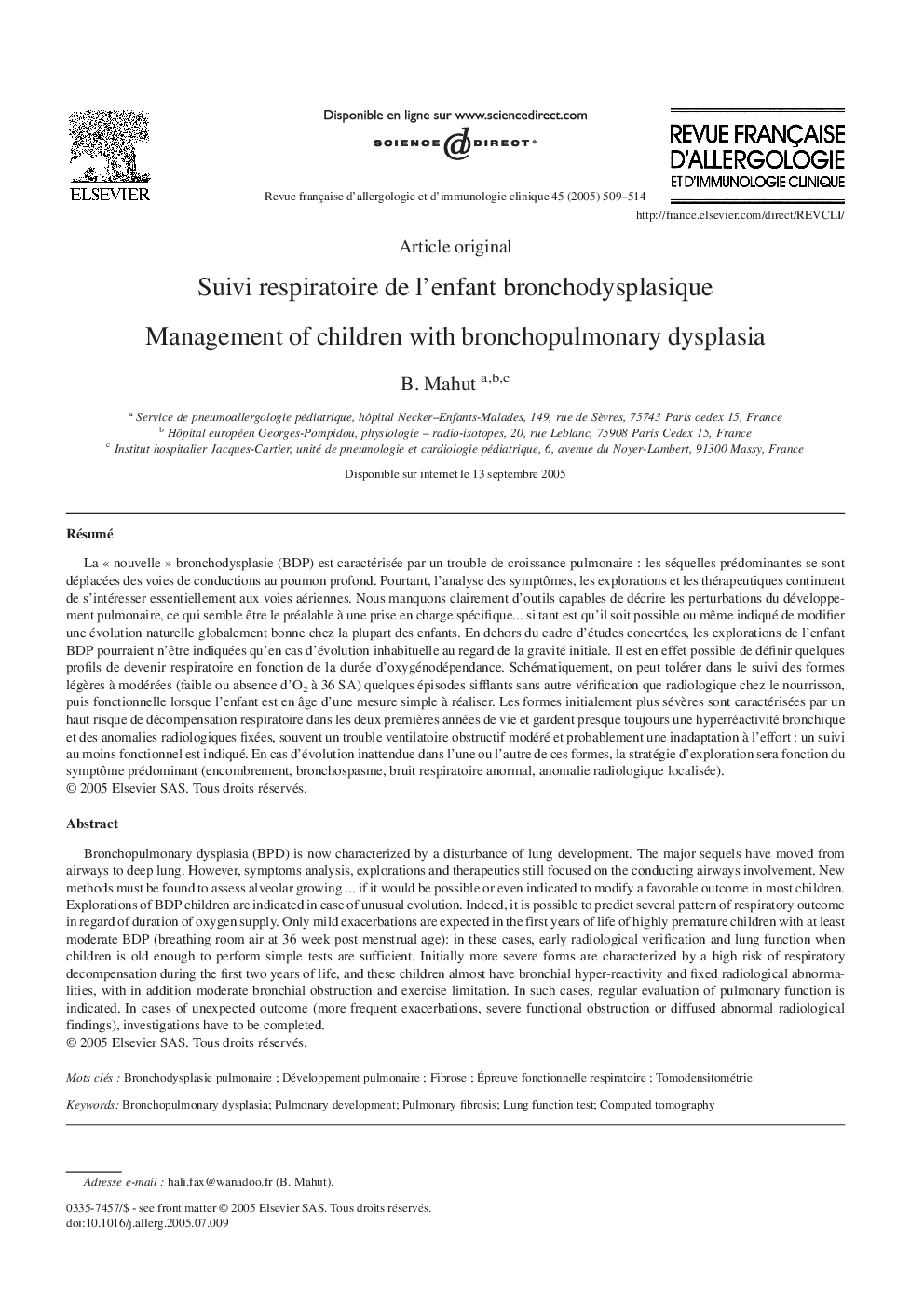| Article ID | Journal | Published Year | Pages | File Type |
|---|---|---|---|---|
| 9100159 | Revue Française d'Allergologie et d'Immunologie Clinique | 2005 | 6 Pages |
Abstract
Bronchopulmonary dysplasia (BPD) is now characterized by a disturbance of lung development. The major sequels have moved from airways to deep lung. However, symptoms analysis, explorations and therapeutics still focused on the conducting airways involvement. New methods must be found to assess alveolar growing ⦠if it would be possible or even indicated to modify a favorable outcome in most children. Explorations of BDP children are indicated in case of unusual evolution. Indeed, it is possible to predict several pattern of respiratory outcome in regard of duration of oxygen supply. Only mild exacerbations are expected in the first years of life of highly premature children with at least moderate BDP (breathing room air at 36 week post menstrual age): in these cases, early radiological verification and lung function when children is old enough to perform simple tests are sufficient. Initially more severe forms are characterized by a high risk of respiratory decompensation during the first two years of life, and these children almost have bronchial hyper-reactivity and fixed radiological abnormalities, with in addition moderate bronchial obstruction and exercise limitation. In such cases, regular evaluation of pulmonary function is indicated. In cases of unexpected outcome (more frequent exacerbations, severe functional obstruction or diffused abnormal radiological findings), investigations have to be completed.
Keywords
Related Topics
Health Sciences
Medicine and Dentistry
Anesthesiology and Pain Medicine
Authors
B. Mahut,
